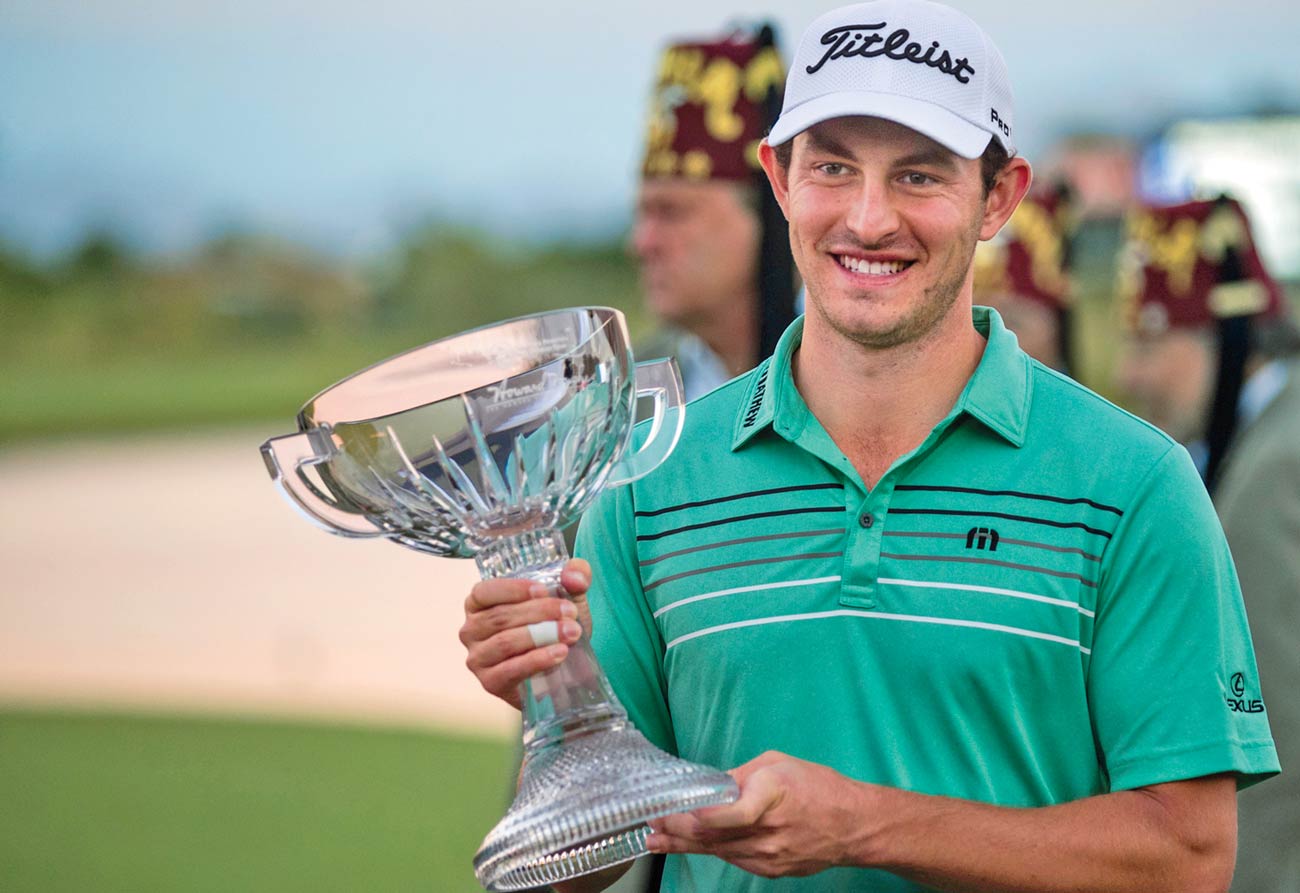How did 26-year-old Patrick Cantlay become so philosophical about life and his success on the course? A year after his win at the Shriners, he sat with GOLF Magazine to talk about a close-to-home tragedy, time away from the game, and some good books.
In 2018, your first full season on Tour, you had seven top 10s and a win at the Shriners. Can you pinpoint why you experienced such solid success?
Part of it is that it doesn’t feel like my first full season. I’d played a lot of the golf courses already, and I felt ready to play great golf.
You ranked pretty high in several strokes gained categories. What’s the one area of your game you most need to improve?
You can always improve in all areas of the game. I didn’t have a great year putting, but it doesn’t feel that off, so keeping a good mindset and expecting putts to fall is important. Most of the year, it felt like most of my game was on, but I don’t think I had it all going for a stretch of time. I know that’s coming.
You had such a decorated career at UCLA, winning the Haskins Award and the Division I Jack Nicklaus Player of the Year as a freshman. For more than a year, you were the world’s top-ranked amateur. Did that put extra pressure on you when you turned pro?
Not really. I think everybody experiences pressure—outside pressure and inside pressure—to achieve what others expect or what you expect of yourself. But the pressure I put on myself is more than the external pressure, and it’s been that way for most of my life. Playing so well as an amateur, I felt like by the time I turned pro I knew exactly what it would be like to play on Tour. I knew what it was like because I’d played nine, ten Tour events before I turned pro. So I wasn’t at all nervous. I knew I belonged.

You’ve said you like to read about other successful people. Whose story have you learned something from?
I read biographies of people I think have either done excellent work or achieved a lot, and the common theme seems to be that none of them worry much about conforming. Whether it’s Patton or Paul Newman or Bob Dylan, they’re most concerned about their own process and their own way of going about things. That’s all the way from how they work and how they interact with other people to how much time they spend on their job and how they spend their off time. I think a lot of really successful people go at their work 100 percent, then have hobbies or something to really shut [the work] off. That allows them to be even more engaged when they’re doing their work.
Having grown up in California, does that personality trait—kind of laid back, doing your own thing—fit you a little bit?
Maybe so. There are a lot of distractions on Tour. “This guy is saying this about my putting.” “That guy has new irons.” “There’s a sponsorship opportunity over here.” “There’s a pro-am on Saturday.” It can be overwhelming at times. I think having a system that works, and not letting other stuff affect that system, helps you be successful.
You had a stretch from’14 to’16 where you dealt with lots of adversity: injuries, along with the loss of your friend and caddie, Chris Roth, who died in a hit-and-run. Did it force you to come up with that system to pick yourself up and get to where you wanted to be?
I think so. It was another set of challenges I had to figure out how to get through.
Do you think you’re a stronger person and player because of it?
I’m for sure a different person. It’s hard for me to imagine what my headspace was before, because it’s not at all the headspace I’m living in now. Looking back, golf was more of a big deal than it is now. Golf was the most important thing in my life, and the worst thing that could happen was playing bad golf. What else is going on when you’re 20 or 21 and you’ve never had anything bad happen to you? Now, knowing there are realities much worse than playing bad golf—I think that helps. But it’s also kind of a somber feeling, knowing that maybe golf isn’t the most important thing anymore.
When you returned to golf full time in 2017, the success came quickly. You made 13 of 13 cuts and qualified for the Tour Championship. Did that surprise you?
Not much. It was interesting how quickly my mindset changed. When I first came back, I was extremely nervous. I felt like making the cut at Pebble was an accomplishment. But that quickly changed to “I want to win golf tournaments.” I’d say it changed literally the next week, once I realized it’s still golf and I can do it just fine. Having that headspace of trying to win tournaments is extremely beneficial for playing well right out of the gate, and playing well every week.
Looking at the new season ahead, do you expect even more of yourself?
It’s the same mindset. I want to win as many tournaments as I can. I want to be extremely prepared and feel like I’m capable and ready to win. And that’s all you can do. If I can have quality starts over and over again, the results are gonna take care of themselves.







